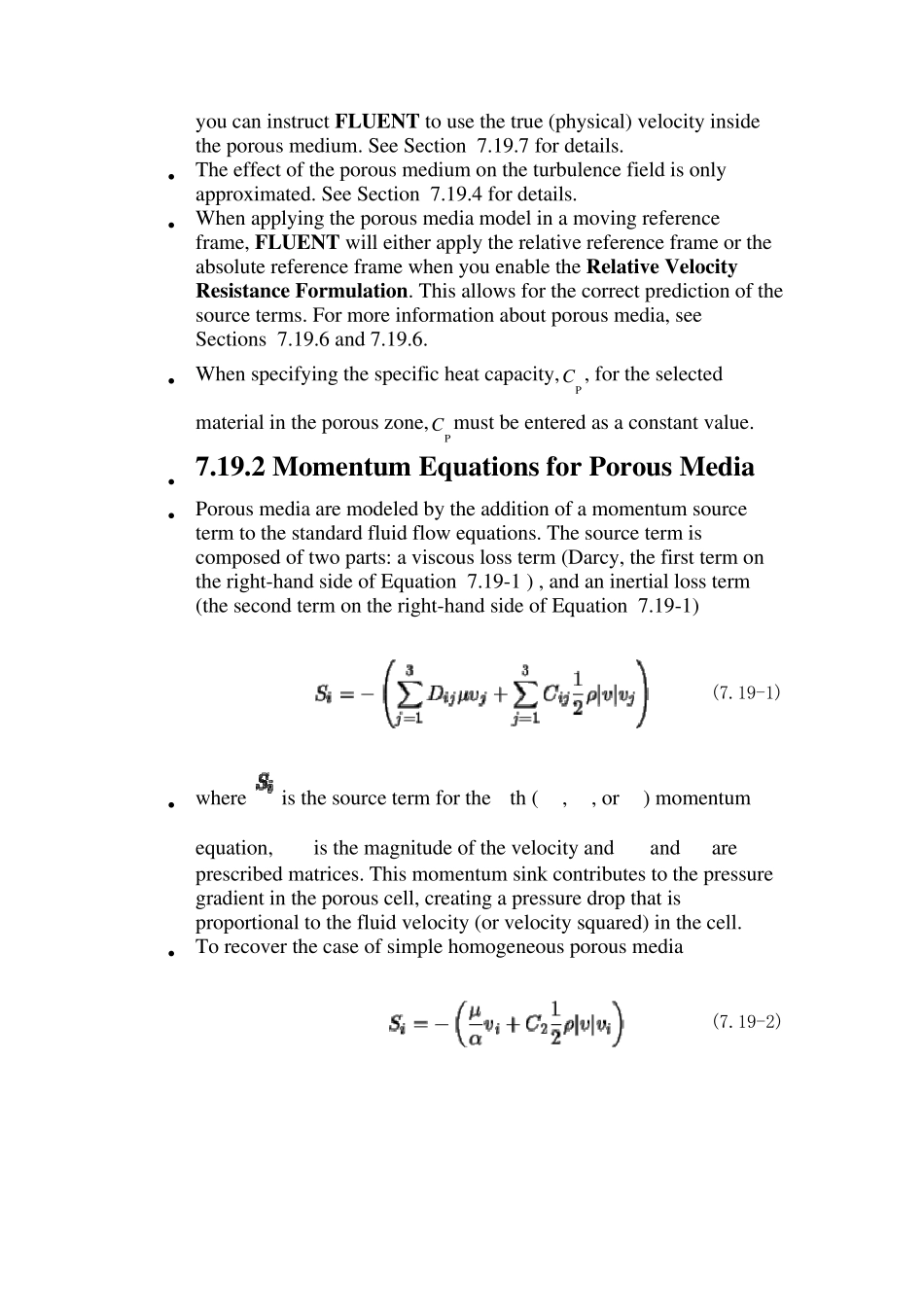7.19 Porou s Media Conditions The porous media model can be used for a wide variety of problems, including flows through packed beds, filter papers, perforated plates, flow distributors, and tube banks. When you use this model, you define a cell zone in which the porous media model is applied and the pressure loss in the flow is determined via your inputs as described in Section 7.19.2. Heat transfer through the medium can also be represented, subject to the assumption of thermal equilibrium between the medium and the fluid flow, as described in Section 7.19.3. A 1D simplification of the porous media model, termed the "porous jump,'' can be used to model a thin membrane with known velocity/pressure-drop characteristics. The porous jump model is applied to a face zone, not to a cell zone, and should be used (instead of the full porous media model) whenever possible because it is more robust and yields better convergence. See Section 7.22 for details. • 7.19.1 Limitations and Assumptions of the Porous Media Model • 7.19.2 Momentum Equations for Porous Media • 7.19.3 Treatment of the Energy Equation in Porous Media • 7.19.4 Treatment of Turbulence in Porous Media • 7.19.5 Effect of Porosity on Transient Scalar Equations • 7.19.6 User Inputs for Porous Media • 7.19.7 Modeling Porous Media Based on Physical Velocity • 7.19.8 Solution Strategies for Porous Media • 7.19.9 Postprocessing for Porous Media 7.19.1 Limitations and Assu mptions of the Porou s Media Model The porous media model incorporates an empirically determined flow resistance in a region of your model defined as "porous''. In essence, the porous media model is nothing more than an added momentum sink in the governing mo...


